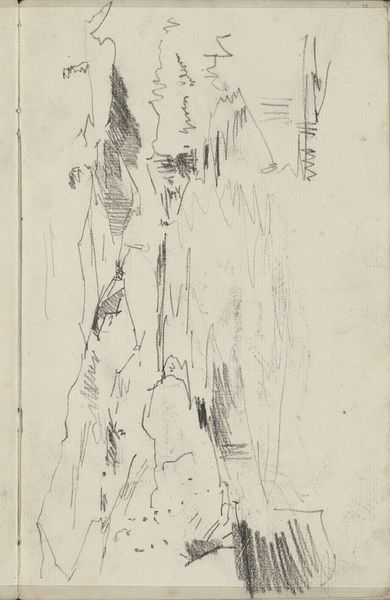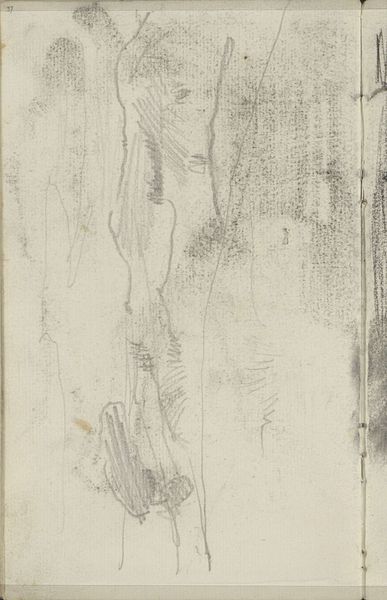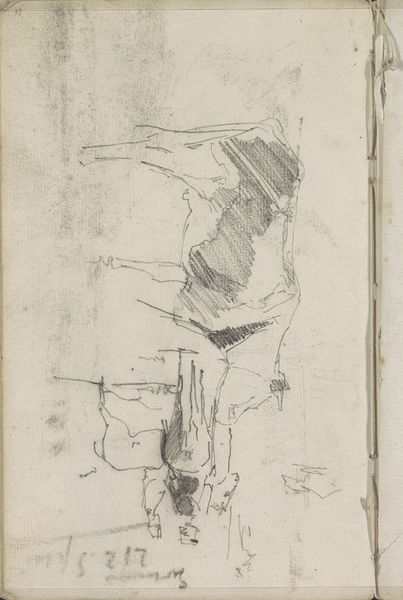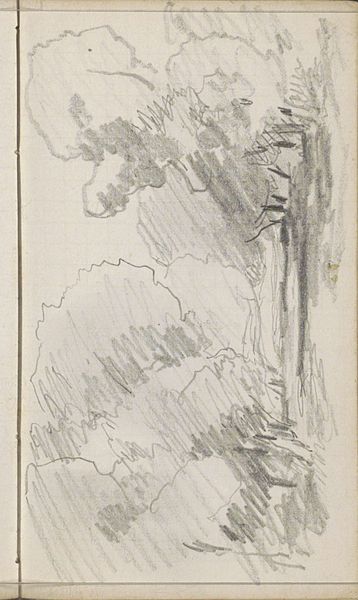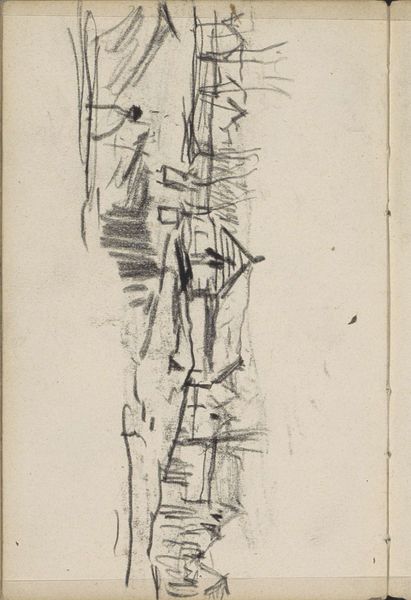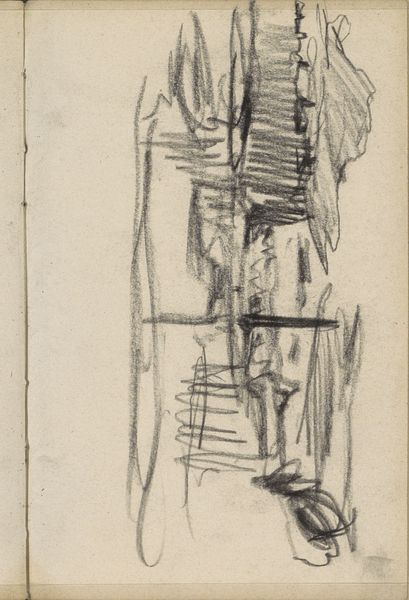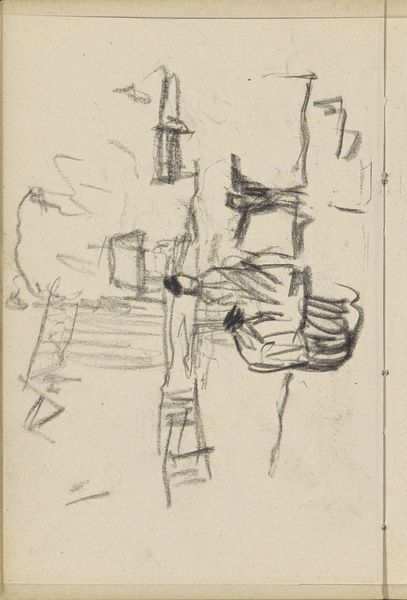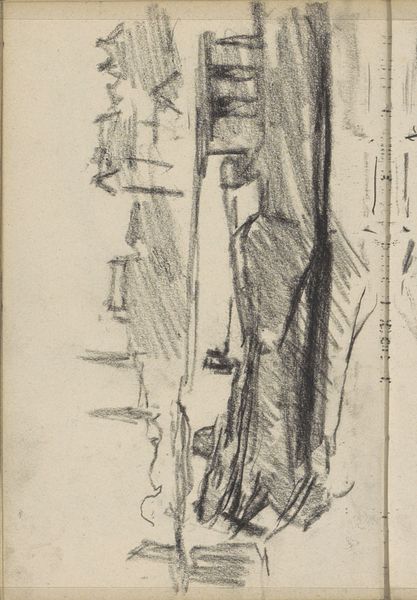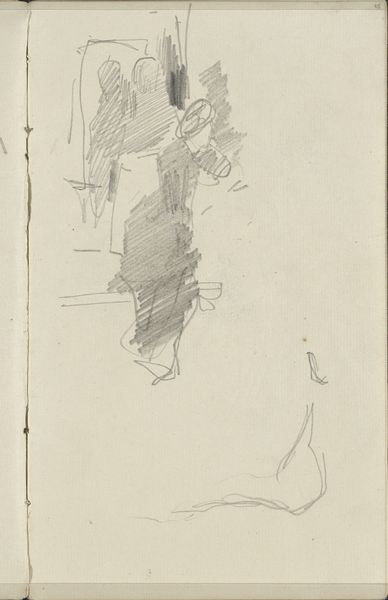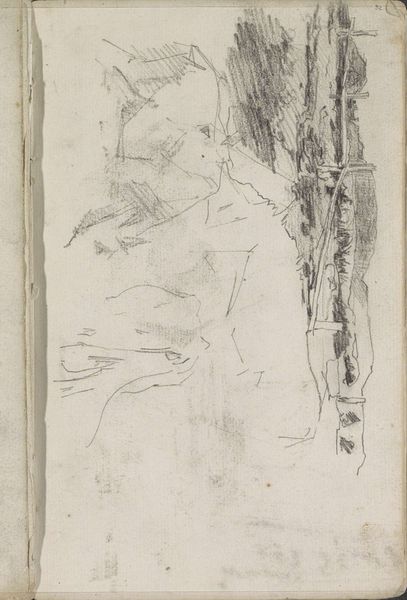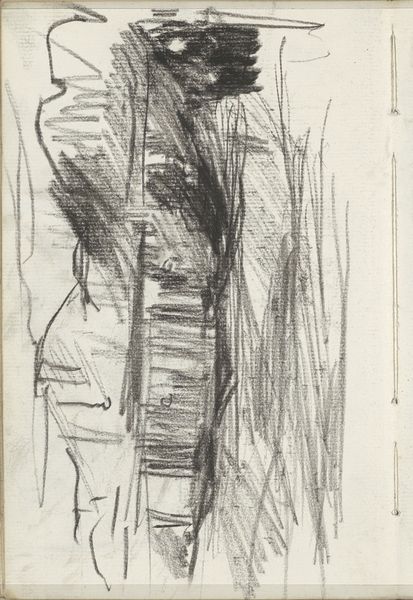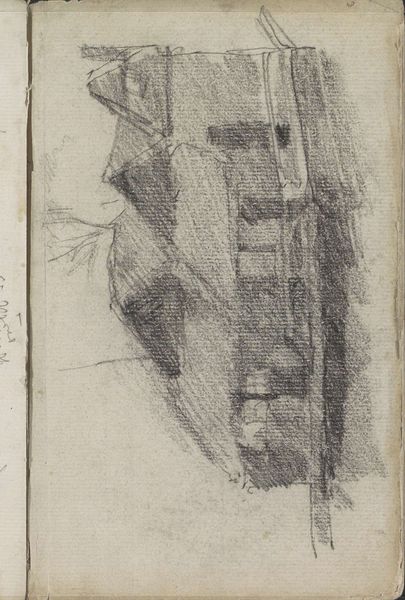
Dimensions: height 197 mm, width 120 mm
Copyright: Rijks Museum: Open Domain
Editor: George Hendrik Breitner's "Straatje", a pencil drawing on paper, probably created sometime between 1867 and 1923, presents a glimpse of urban life. The sketch is so immediate, almost like a snapshot. What historical context informs Breitner's work and this scene in particular? Curator: Breitner was very much a painter of modern life. He moved away from traditional painting styles and subjects. The rapid urbanization of Amsterdam and other cities created new social realities. The street was no longer just a space for transit, but a stage for everyday dramas and social inequalities. Think of the rise of photography and how that influenced the impressionists, and their quick way to catch the urban moment. How do you think his choice of a humble subject like this, is contributing to democratizing art? Editor: By representing the everyday lives of ordinary people, it shifts away from the heroic or the historical, making art more relevant and accessible to a wider audience. The way he used sketches like this, as snapshots, could be about a wish to engage the life of that specific street at that specific time. Do you agree? Curator: I agree completely. Breitner sought authenticity in his representation of modern life, showing a kind of documentary view. Now I wonder, considering what he depicted and how, what do you think were the societal reactions at that time? Editor: I can imagine people found it either relatable or perhaps too mundane, questioning its value as "art". I now understand how Breitner's artistic choices challenged conventions. Curator: Precisely! And it reminds us that the meaning and reception of art are always shaped by their social and political moment.
Comments
No comments
Be the first to comment and join the conversation on the ultimate creative platform.
